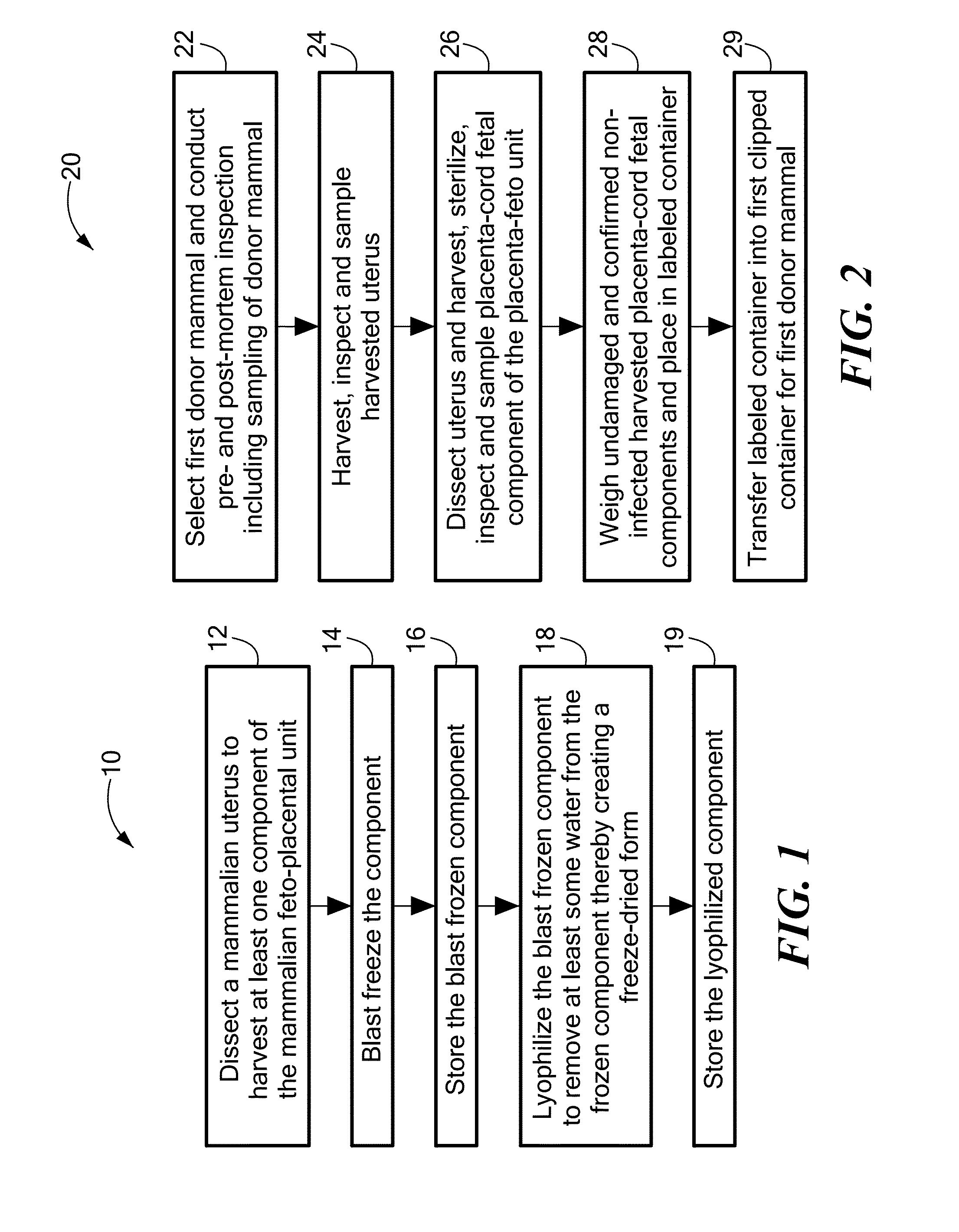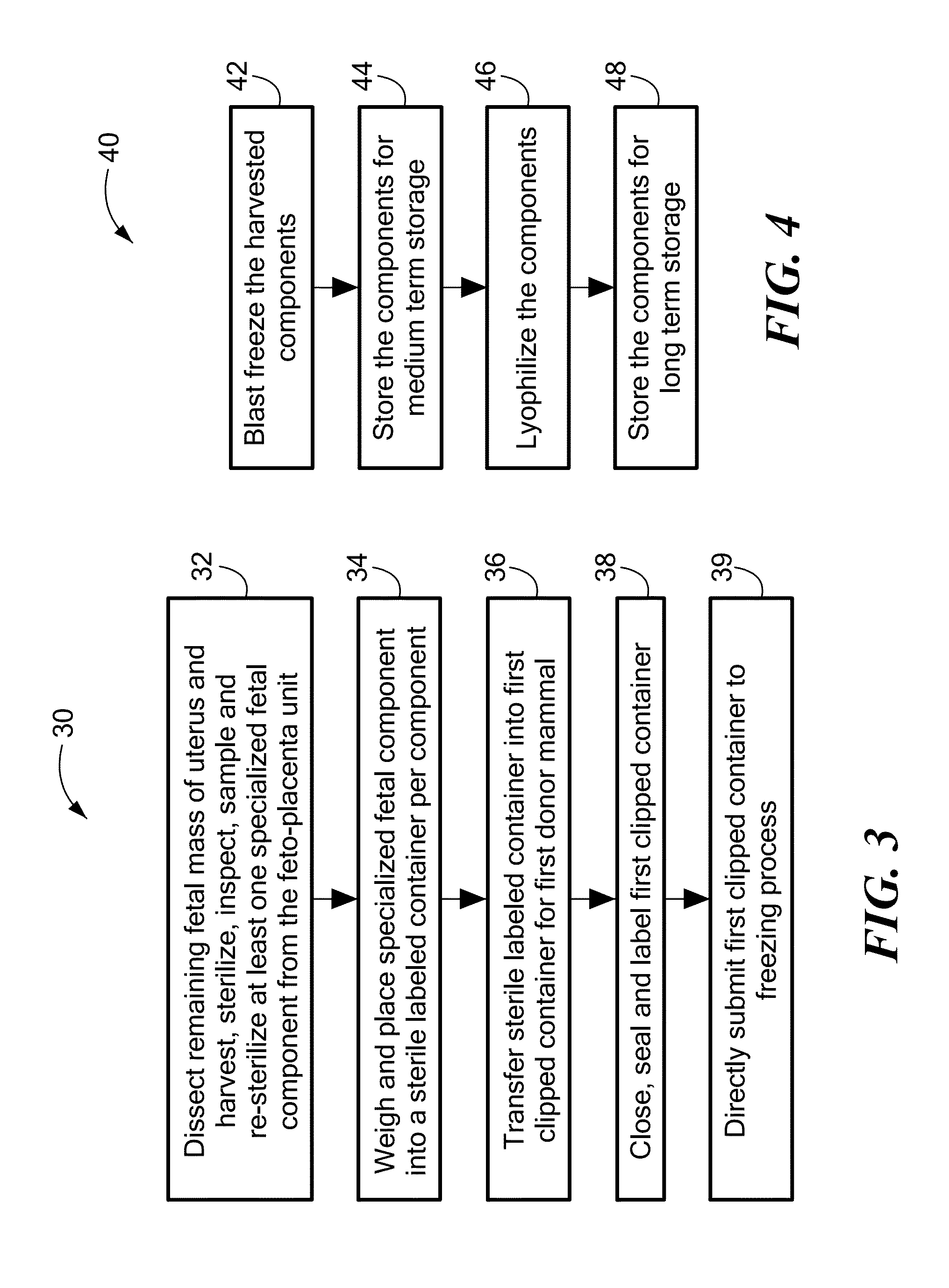Method for the harvesting, processing, and storage of proteins from the mammalian feto-placental unit and use of such proteins in compositions and medical treatment
a technology of feto-placental unit and protein, which is applied in the field of chaperone proteins, can solve the problems of increasing ros, adversely affecting dna, mrna and protein synthesis, folding, transport and degradation, and chaperone proteins are not readily available for medical research and possible medical therapies, so as to reduce the accumulation
- Summary
- Abstract
- Description
- Claims
- Application Information
AI Technical Summary
Benefits of technology
Problems solved by technology
Method used
Image
Examples
example
[0043]A donor sheep certified according to New Zealand Protocol was selected. Placenta-cord, liver, gastro-intestinal and specific male fetal components were dissected, harvested, and processed including inspection, sterilization, blast freezing followed by lyophilization. The lyophilized components were stored for at least of two years. Tissue samples were then extracted from the lyophilized components periodically according to the patient treatment protocol and reconstituted with sterilized saline to form 6 ml injection samples including 1 gram of reconstituted lyophilized component per each sample.
[0044]At the onset of treatment, Patient X was in his early 90's and had concomitant pro static cancer which exhibited as an enlargement of the prostate gland coupled with a prostate specific antigen (PSA) score of over 20. The patient had experienced baldness for approximately 40 years. The patient suffered from clinical stiffness and exhibited stooped posture due to osteoporosis. The ...
PUM
 Login to View More
Login to View More Abstract
Description
Claims
Application Information
 Login to View More
Login to View More - R&D
- Intellectual Property
- Life Sciences
- Materials
- Tech Scout
- Unparalleled Data Quality
- Higher Quality Content
- 60% Fewer Hallucinations
Browse by: Latest US Patents, China's latest patents, Technical Efficacy Thesaurus, Application Domain, Technology Topic, Popular Technical Reports.
© 2025 PatSnap. All rights reserved.Legal|Privacy policy|Modern Slavery Act Transparency Statement|Sitemap|About US| Contact US: help@patsnap.com



